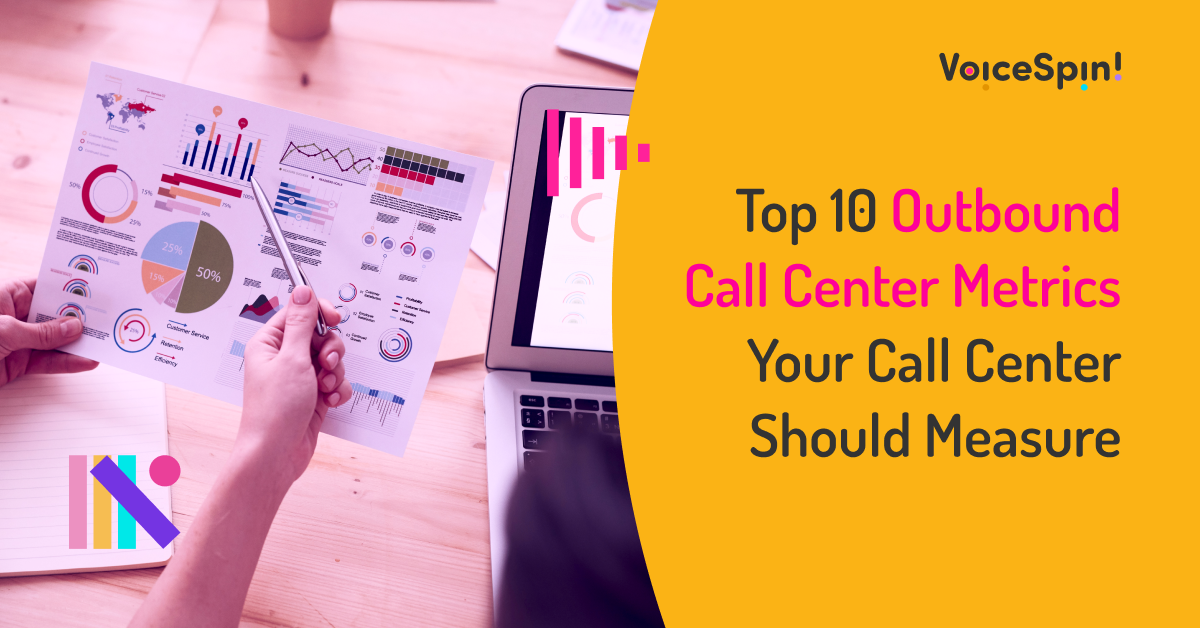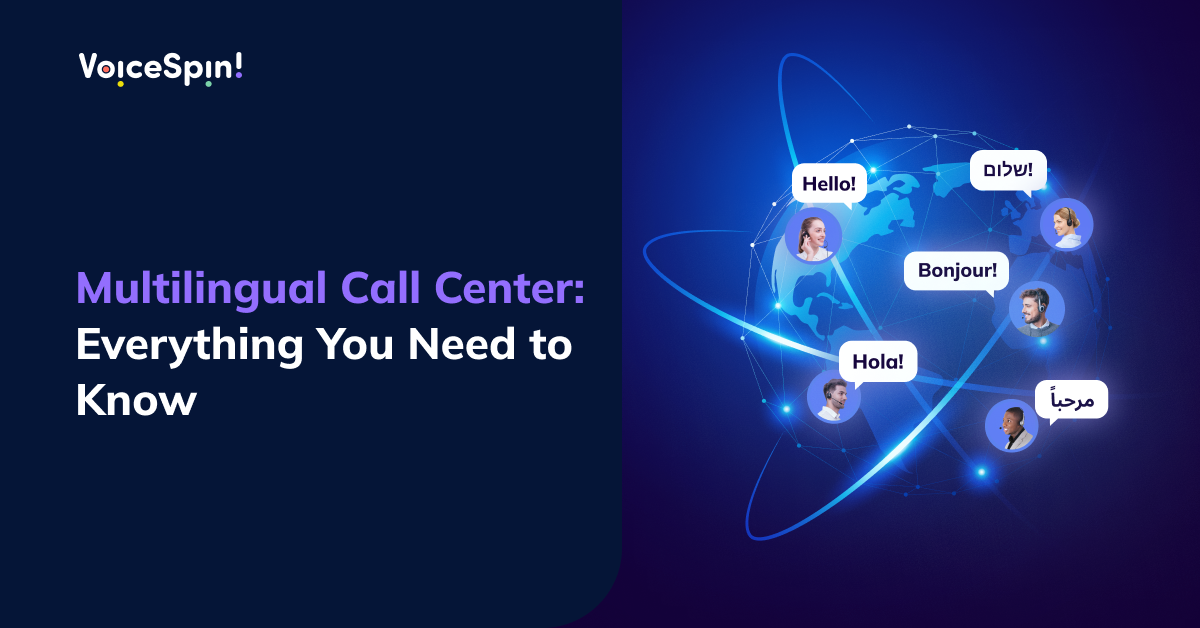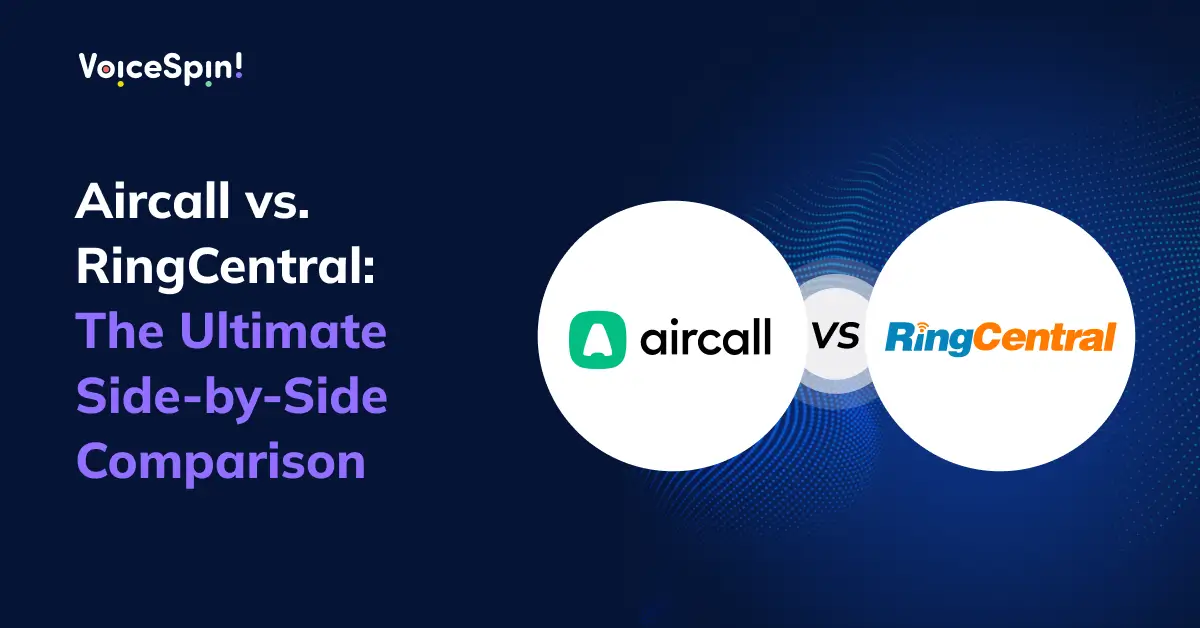When running an outbound call center, consistently improving the performance of your outbound calling efforts is the key to ensuring your call center’s success. However, to improve something, you obviously need to measure it first, and this is where outbound call center metrics come into play.
Once you know what to measure and how to measure it, you can work out ways to improve your call center operations and ensure your agents consistently hit their sales targets.
If you’re not sure what metrics and Key Performance Indicators (KPIs) you should be tracking, we’ll walk you through the most critical outbound call center metrics and how to enhance your outbound call center performance.
What are Outbound Call Center Metrics and Why Measure Them?
Outbound call center metrics are measurable values that help outbound call centers track the effectiveness of their operations, measure agent performance, and gauge the success of outbound sales and marketing campaigns. Luckily, most outbound call center software solutions allow tracking call center efficiency metrics automatically through built-in analytics capabilities.
By consistently measuring outbound call center performance metrics and KPIs, call center managers can timely identify inefficiencies in the existing processes, areas for improvement, and where agents might need additional training. Having the right data, managers can make more accurate, data-driven decisions taking their outbound call center performance to the next level.
10 Key Outbound Call Center Metrics and KPIs to Track
With so many outbound contact center metrics out there, how do you know which ones you should be tracking? Some managers rely on very few basic outbound call metrics, which can actually narrow their perspective of what’s really happening.
Below we’ve highlighted the top 10 outbound call center agent performance metrics and KPIs outbound call centers can track, though it doesn’t necessarily mean you should be measuring all of them.
1. Answer Success Rate
Answer Success Rate (ASR), also known as Call Answer Rate or Answer Seizure Rate, is one of the key outbound sales call center metrics to assess the efficiency of your outbound calling campaigns.
It indicates the percentage of the calls answered by leads, prospects, or customers out of the total number of attempted outbound calls initiated by agents within a certain period.
Low ASR may indicate the low quality of your contact lists or an inefficient calling strategy. ASR is closely related to the Connection Rate, which basically measures the same, but also adds voicemails to the number of answered calls, making it a broader metric.
ASR = (Number of answered calls / Total number of calls dialed) x 100%
2. Calls per Agent
Calls per Agent is a simple and straightforward outbound call center metric that shows the number of calls made by agents in a given period (an hour, a day, or a week).
It helps call center managers track each agent’s performance and optimize scheduling and staffing levels to ensure that there are enough reps available to handle the required outbound call volume efficiently.
However, even though it does show how many calls an agent makes within a certain time frame, it doesn’t take into account the quality of interactions and how many of them actually result in sales. That’s why it should be used in conjunction with other metrics.
Calls per Agent = Total number of calls answered / Total number of agents
3. Conversion Rate
Conversion Rate measures the percentage of outbound calls that result in a successful outcome, which may vary based on the goal of a particular outbound calling campaign. That could be a closed sale for a sales call, a prospect’s contact information for lead generation campaigns, a booked appointment, or other desired outcomes.
Conversion Rate is a particularly crucial metric for outbound sales teams as it shows how efficient your sales reps are at converting leads into paying customers.
A low conversion rate ultimately means increased cost per lead, which impacts your operational expenses.
Conversion Rate = (Number of successful outcomes / Number of outbound calls) x 100%
4. First Call Close (FCC)
First Call Close (FCC) is a common metric to measure in outbound call centers. It indicates the percentage of outbound calls that result in a desired outcome, typically a successful sale or conversion, on the first attempt.
A high FCC rate means that the general approach and the sales pitch used by agents are efficient, and agents are able to effectively communicate the value of products or services to close sales.
A low FCC, on the other side, suggests that certain changes need to be made to the sales scripts used, agent training, or processes.
FCC rate = (Number of successful conversions on first attempt / Number of outbound calls) x 100%
5. Average Handle Time (AHT)
Just like for inbound calls, Average Handle Time (AHT) is used to measure the average time it takes for agents to handle the call, starting from when a prospect or a customer picks up the call until the call is ended by either party. That also includes any time spent on hold and completing after-call-related activities.
Call centers are typically aiming to reduce the Average Handle Time as it would mean agents can handle more outbound calls, which may result in increased conversions.
AHT = (Total talk time + Hold time + After-call work time) / Total number of calls
6. Call Quality
Unlike other outbound call center agent performance metrics, Call Quality is a more subjective metric. Measuring it basically boils down to how you define a good-quality call and a bad one and can take into account factors like agent behavior, adherence to a call script, engagement with the prospect, customer satisfaction, etc.
A good way to assess call quality is by using a real-time call monitoring feature that enables managers or supervisors to listen in to live agent calls and grade them based on specific pre-defined parameters.
Alternatively, managers can review call recordings or automatically generated call scripts to evaluate call quality.
In addition, advanced call center solutions like AI-powered Speech Analytics software can help call centers gain even more insights into the quality of their calls.
7. Dropped Call Rate
Dropped Call Rate or Call Abandonment Rate shows the percentage of calls that are dropped before the recipient is connected to an agent.
That could happen when auto dialers, such as predictive dialers, place multiple calls per agent before an agent becomes available, so an agent might not be able to answer the call once it’s connected.
High Dropped Call Rate means you are burning through leads due to an inefficient dialing strategy – or you might not have enough agents to effectively handle your outbound call volume.
Dropped Call Rate = (Number of dropped calls / Total number of attempted calls) x 100%
8. Occupancy Rate
Occupancy Rate is an important outbound call center metric that measures the percentage of time an agent spends handling calls or performing after-call-related work (like updating the prospect’s or customer’s information) compared to the total time they are available to take calls.
A high Occupancy Rate is generally considered desirable as it can indicate that agents are effectively utilizing their time, which means more calls made during a shift and more opportunities to generate sales or achieve other calling campaign objectives.
Occupancy Rate = (Total call handle time / Total logged-in time) x 100%
9. Cost per Call (CPC)
In the context of outbound calls, Cost per Call (CPC) refers to the cost of making each outbound call by call center reps.
When measuring CPC, you need to consider all the expenses associated with making outbound calls, including call center software subscription costs, phone bills, internet charges, agent salaries, and other operational expenses.
Cost per Call helps determine how efficiently an outbound call center operates and generates revenue and whether it’s necessary to reduce costs and optimize their resources.
Cost per Call = Total cost of outbound calls / Total number of outbound calls
10. Cost per Acquisition (CPA)
Cost per Acquisition (CPA) measures the cost of acquiring a new customer through outbound calling campaigns and gives call centers insight into the costs associated with converting leads.
Understanding this metric helps call center managers determine the efficiency of their outbound calling efforts.
By consistently monitoring and optimizing the CPA, managers can ensure they are allocating resources effectively and maximizing their return on investment (ROI).
CPA = Total cost of outbound call campaign / Number of new customers acquired
In addition to these outbound metrics, it’s also beneficial to understand inbound call center metrics, which offer a different perspective on call center efficiency and customer service quality.
Improve Your Outbound Call Center Performance by Leveraging the Right Technology
While consistently tracking your outbound call center metrics and KPIs is essential to understanding how efficient your outbound calling strategy is, it’s only the first step to enhancing your outbound call center performance.
By leveraging the right call center technology, such as predictive dialing, local presence, call recording, real-time call monitoring, and speech analytics, you can optimize the efficiency of your call center operations, boost your agents’ productivity, and improve your outbound call center performance.
For example, by using predictive dialer software, you can minimize agent idle time between calls as the system is able to predict agent availability and starts dialing numbers even before the agent completes their current call. So, when the call is over, there’s already someone waiting in the queue and the agent can instantly move on to the next call. That can ultimately improve agent efficiency and the overall call center performance by increasing the number of calls per agent and conversion rate.
VoiceSpin’s AI Auto Dialer takes agent efficiency even one step further with advanced Artificial Intelligence and machine learning algorithms at the core of the dialer solution. Using a dynamic lead and agent scoring system, it can score, prioritize, and match leads to the most suitable agents who are most likely to make the sale. It means more sales conversions, a higher First Call Close Rate, and increased revenue.
Book a free demo with our sales team today to learn more about how VoiceSpin’s call center software featuring AI Auto Dialer and Speech Analyzer can streamline your call center operations, helping you improve the efficiency of your outbound sales calling campaigns.





 +18889082995
+18889082995
 +442036084160
+442036084160
 +97237237006
+97237237006